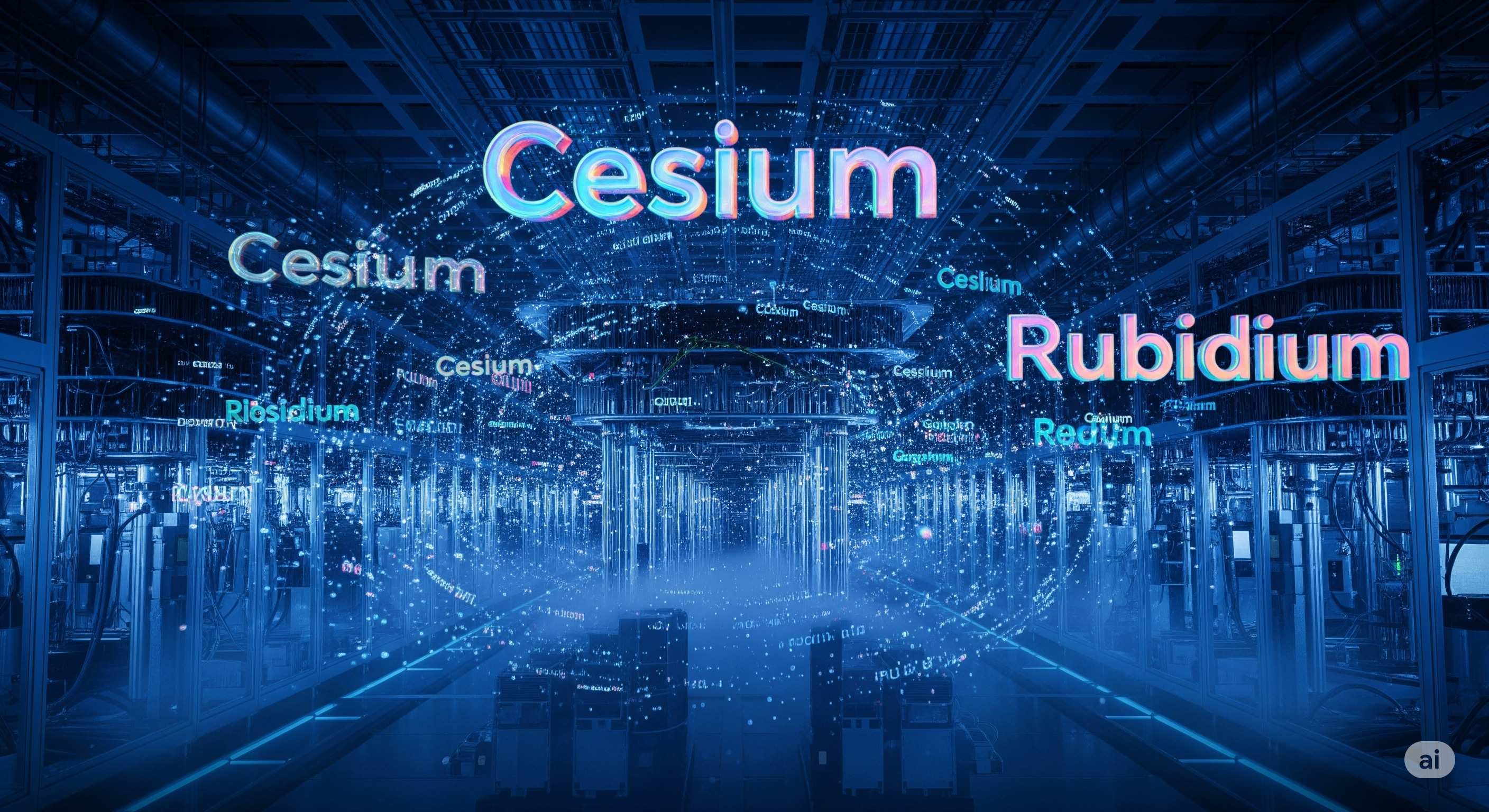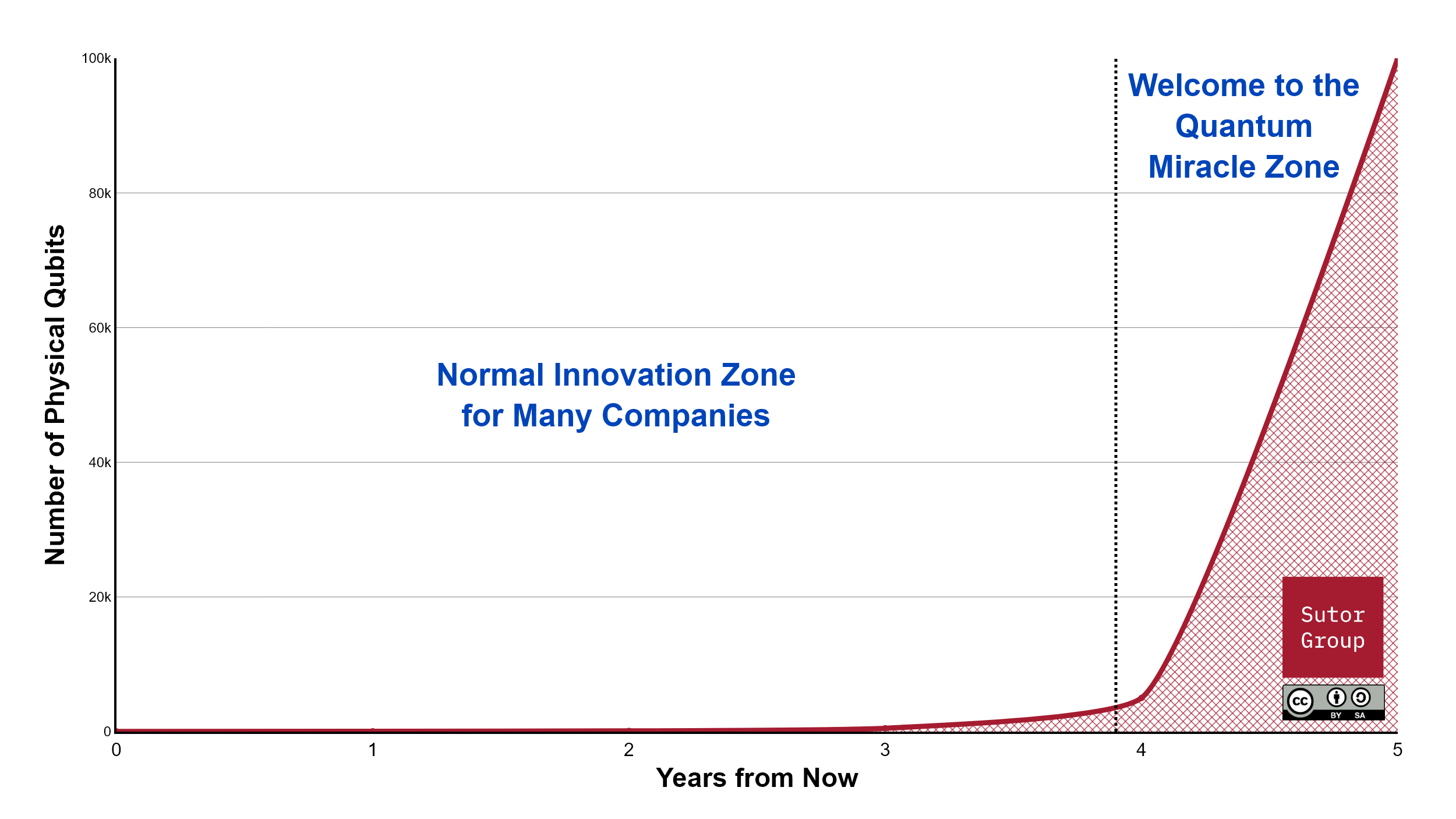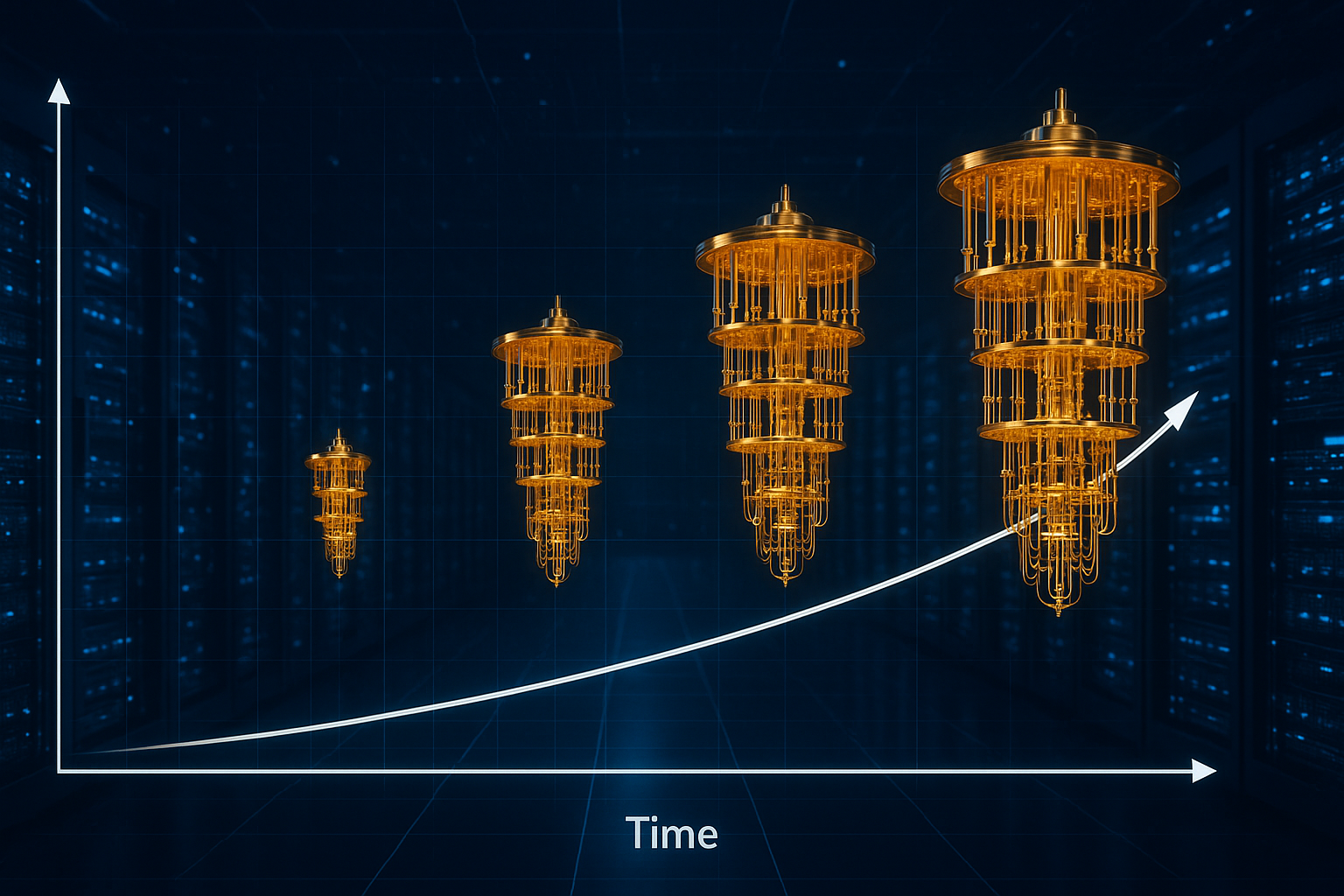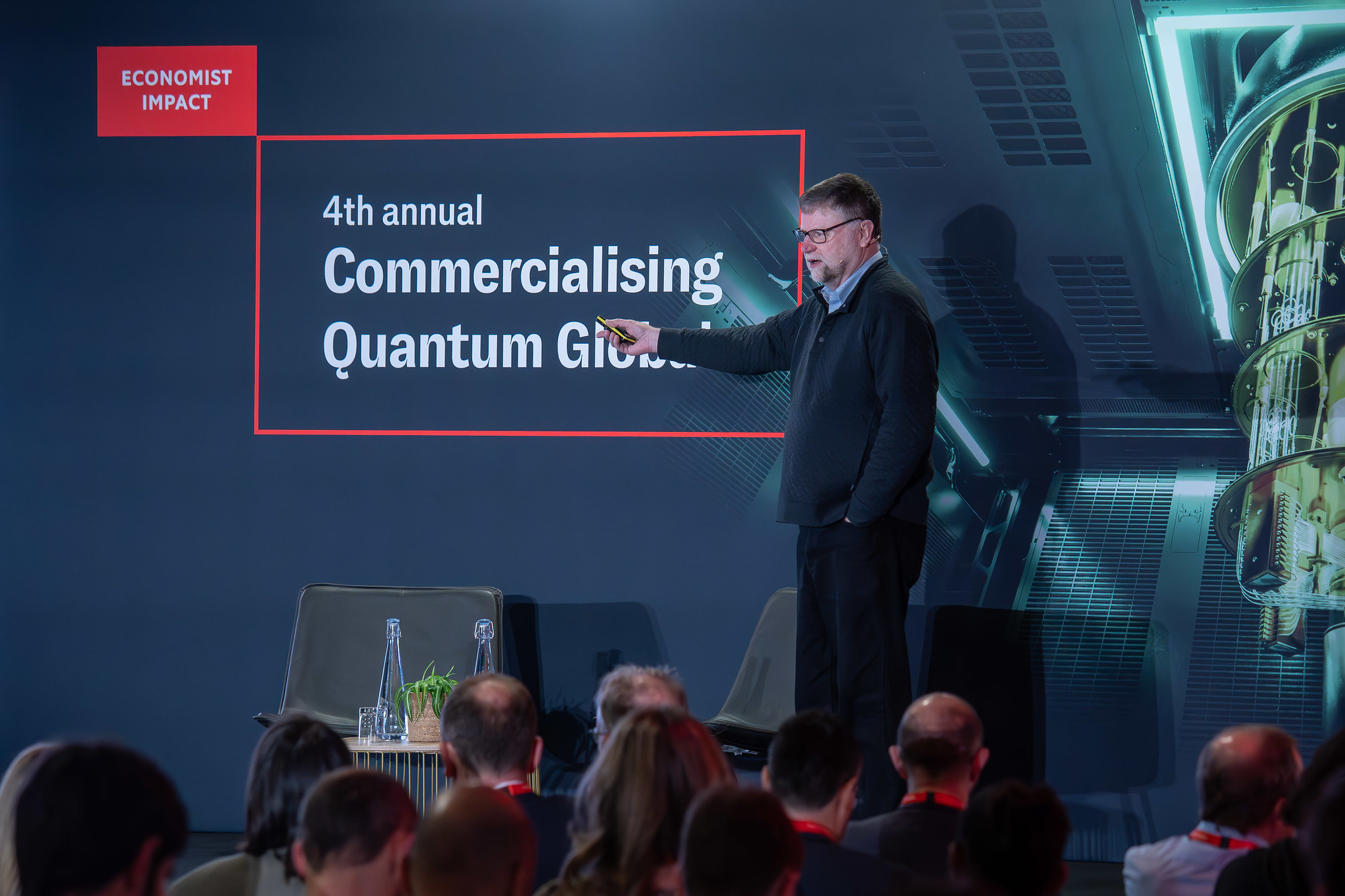A selection of the most important recent news, articles, and papers about Quantum.
General News, Articles, and Analyses
IBM’s Quantum-Centric Supercomputing Vision Is Coming – IEEE Spectrum
https://spectrum.ieee.org/ibm-quantum-computer-2668978269
Authors: Ryan Mandelbaum; Antonio D. Corcoles; and Jay Gambetta
(Wednesday, August 21, 2024) “For decades, quantum computers have struggled to reach commercial viability. The quantum behaviors that power these computers are extremely sensitive to environmental noise, and difficult to scale to large enough machines to do useful calculations. But several key advances have been made in the last decade, with improvements in hardware as well as theoretical advances in how to handle noise. These advances have allowed quantum computers to finally reach a performance level where their classical counterparts are struggling to keep up, at least for some specific calculations. For the first time, IBM researchers can see a path toward useful quantum computers, by incorporating classical and quantum computing together into what they call a quantum-centric supercomputer.”
Toward a code-breaking quantum computer | MIT News | Massachusetts Institute of Technology
https://news.mit.edu/2024/toward-code-breaking-quantum-computer-0823
Author: Adam Zewe | MIT News
(Friday, August 23, 2024) “Building on a landmark algorithm, MIT researchers propose a way to make a smaller and more noise-tolerant quantum factoring circuit for cryptography.”
How GQI Evaluates Quantum Processor Development Roadmaps
https://quantumcomputingreport.com/how-gqi-evaluates-quantum-processor-development-roadmaps/
Author: Doug Finke
(Saturday, August 24, 2024) “One activity that investors, governments, and quantum hardware companies call upon Global Quantum Intelligence (GQI) frequently to do is to perform a due diligence assessment of a quantum processor development roadmap. In order to ensure a complete and consistent approach, GQI has developed a few frameworks that we use on all these projects and we would like to share these frameworks in this article. Our first phase in these analyses is a technical assessment. One of the frameworks we use in the technical assessment is the GQI Hardware Stack which describes all the necessary pieces of technology that will be needed […]”
UC Riverside team develops new superconductor material for quantum computing | Tom’s Hardware
Author: Jowi Morales
(Monday, August 26, 2024) ““Our material could be a promising candidate for developing more scalable and reliable quantum computing components,” said physicist Peng Wei.”
Technical Papers, Articles, and Preprints
[2405.21058] Quantum state preparation for multivariate functions
https://arxiv.org/abs/2405.21058
Authors: Rosenkranz, Matthias; Brunner, Eric; Marin-Sanchez, Gabriel; Fitzpatrick, Nathan; Dilkes, Silas; Tang, Yao; Kikuchi, Yuta; and Benedetti, Marcello
(Friday, May 31, 2024) “A fundamental step of any quantum algorithm is the preparation of qubit registers in a suitable initial state. Often qubit registers represent a discretization of continuous variables and the initial state is defined by a multivariate function. We develop protocols for preparing quantum states whose amplitudes encode multivariate functions by linearly combining block-encodings of Fourier and Chebyshev basis functions. Without relying on arithmetic circuits, quantum Fourier transforms, or multivariate quantum signal processing, our algorithms are simpler and more effective than previous proposals. We analyze requirements both asymptotically and pragmatically in terms of near/medium-term resources. Numerically, we prepare bivariate Student’s t-distributions, 2D Ricker wavelets and electron wavefunctions in a 3D Coulomb potential, which are initial states with potential applications in finance, physics and chemistry simulations. Finally, we prepare bivariate Gaussian distributions on the Quantinuum H2-1 trapped-ion quantum processor using 24 qubits and up to 237 two-qubit gates.”
An Implementation and Analysis of a Practical Quantum Link Architecture Utilizing Entangled Photon Sources
https://ieeexplore.ieee.org/document/10628322
Authors: Kento Samuel Soon; Michal Hajdušek; Shota Nagayama; Naphan Benchasattabuse; Kentaro Teramoto; Ryosuke Satoh; and Rodney Van Meter
(Monday, July 01, 2024) “Quantum repeater networks play a crucial role in distributing entanglement. Various link architectures have been proposed to facilitate the creation of Bell pairs between distant nodes, with entangled photon sources emerging as a primary technology for building quantum networks. Our work advances the Memory-Source-Memory (MSM) link architecture, addressing the absence of practical implementation details. We conduct numerical simulations using the Quantum Internet Simulation Package (QuISP) to analyze the performance of the MSM link and contrast it with other link architectures. We observe a saturation effect in the MSM link, where additional quantum resources do not affect the Bell pair generation rate of the link. By introducing a theoretical model, we explain the origin of this effect and characterize the parameter region where it occurs. Our work bridges theoretical insights with practical implementation, which is crucial for robust and scalable quantum networks.”
[2408.10726] Quantum Artificial Intelligence: A Brief Survey
https://arxiv.org/abs/2408.10726
Authors: Klusch, Matthias; Lässig, Jörg; Müssig, Daniel; Macaluso, Antonio; and Wilhelm, Frank K.
(Tuesday, August 20, 2024) “Quantum Artificial Intelligence (QAI) is the intersection of quantum computing and AI, a technological synergy with expected significant benefits for both. In this paper, we provide a brief overview of what has been achieved in QAI so far and point to some open questions for future research. In particular, we summarize some major key findings on the feasability and the potential of using quantum computing for solving computationally hard problems in various subfields of AI, and vice versa, the leveraging of AI methods for building and operating quantum computing devices.”
[2408.12433] Technology and Performance Benchmarks of IQM’s 20-Qubit Quantum Computer
https://arxiv.org/abs/2408.12433
Authors: Abdurakhimov, Leonid; Adam, Janos; Ahmad, Hasnain; Ahonen, Olli; Algaba, Manuel; Alonso, Guillermo; Bergholm, Ville; Beriwal, Rohit; Beuerle, Matthias; Bockstiegel, Clinton; Calzona, Alessio; Chan, Chun Fai; Cucurachi, Daniele; Dahl, Saga; Davletkaliyev, Rakhim; Fedorets, Olexiy; Frieiro, Alejandro Gomez; Gao, Zheming; Guldmyr, Johan; Guthrie, Andrew; Hassel, Juha; Heimonen, Hermanni; Heinsoo, Johannes; Hiltunen, Tuukka; Holland, Keiran; Hotari, Juho; Hsu, Hao; Huhtala, Antti; Hyyppä, Eric; Hämäläinen, Aleksi; Ikonen, Joni; Inel, Sinan; Janzso, David; Jaakkola, Teemu; Jenei, Mate; Jolin, Shan; Juliusson, Kristinn; Jussila, Jaakko; Khalid, Shabeeb; Kim, Seung-Goo; Koistinen, Miikka; Kokkoniemi, Roope; Komlev, Anton; Ockeloen-Korppi, Caspar; Koskinen, Otto; Kotilahti, Janne; Kuisma, Toivo; Kukushkin, Vladimir; Kumpulainen, Kari; Kuronen, Ilari; Kylmälä, Joonas; Lamponen, Niclas; Lamprich, Julia; Landra, Alessandro; Leib, Martin; Li, Tianyi; Liebermann, Per; Lintunen, Aleksi; Liu, Wei; Luus, Jürgen; Marxer, Fabian; de Griend, Arianne Meijer-van; Mitra, Kunal; Moqadam, Jalil Khatibi; Mrożek, Jakub; Mäkynen, Henrikki; Mäntylä, Janne; Naaranoja, Tiina; Nappi, Francesco; Niemi, Janne; Ortega, Lucas; Palma, Mario; Papič, Miha; Partanen, Matti; Penttilä, Jari; Plyushch, Alexander; Qiu, Wei; Rath, Aniket; Repo, Kari; Riipinen, Tomi; Ritvas, Jussi; Romero, Pedro Figueroa; Ruoho, Jarkko; Räbinä, Jukka; Saarinen, Sampo; Sagar, Indrajeet; Sargsyan, Hayk; Sarsby, Matthew; Savola, Niko; Savytskyi, Mykhailo; Selinmaa, Ville; Smirnov, Pavel; Suárez, Marco Marín; Sundström, Linus; Słupińska, Sandra; Takala, Eelis; Takmakov, Ivan; Tarasinski, Brian; Thapa, Manish; Tiainen, Jukka; Tosto, Francesca; Tuorila, Jani; Valenzuela, Carlos; Vasey, David; Vehmaanperä, Edwin; Vepsäläinen, Antti; Vienamo, Aapo; Vesanen, Panu; Välimaa, Alpo; Wesdorp, Jaap; Wurz, Nicola; Wybo, Elisabeth; Yang, Lily; and Yurtalan, Ali
(Thursday, August 22, 2024) “Quantum computing has tremendous potential to overcome some of the fundamental limitations present in classical information processing. Yet, today’s technological limitations in the quality and scaling prevent exploiting its full potential. Quantum computing based on superconducting quantum processing units (QPUs) is among the most promising approaches towards practical quantum advantage. In this article the basic technological approach of IQM Quantum Computers is described covering both the QPU and the rest of the full-stack quantum computer. In particular, the focus is on a 20-qubit quantum computer featuring the Garnet QPU and its architecture, which we will scale up to 150 qubits. We also present QPU and system-level benchmarks, including a median 2-qubit gate fidelity of 99.5% and genuinely entangling all 20 qubits in a Greenberger-Horne-Zeilinger (GHZ) state.”
[2408.12583] Quantum Circuit Optimization using Differentiable Programming of Tensor Network States
https://arxiv.org/abs/2408.12583
Authors: Rogerson, David and Roy, Ananda
(Thursday, August 22, 2024) “Efficient quantum circuit optimization schemes are central to quantum simulation of strongly interacting quantum many body systems. Here, we present an optimization algorithm which combines machine learning techniques and tensor network methods. The said algorithm runs on classical hardware and finds shallow, accurate quantum circuits by minimizing scalar cost functions. The gradients relevant for the optimization process are computed using the reverse mode automatic differentiation technique implemented on top of the time-evolved block decimation algorithm for matrix product states. A variation of the ADAM optimizer is utilized to perform a gradient descent on the manifolds of charge conserving unitary operators to find the optimal quantum circuit. The efficacy of this approach is demonstrated by finding the ground states of spin chain Hamiltonians for the Ising, three-state Potts and the massive Schwinger models for system sizes up to L=100. The first ten excited states of these models are also obtained for system sizes L=24. All circuits achieve high state fidelities within reasonable CPU time and modest memory requirements.”




